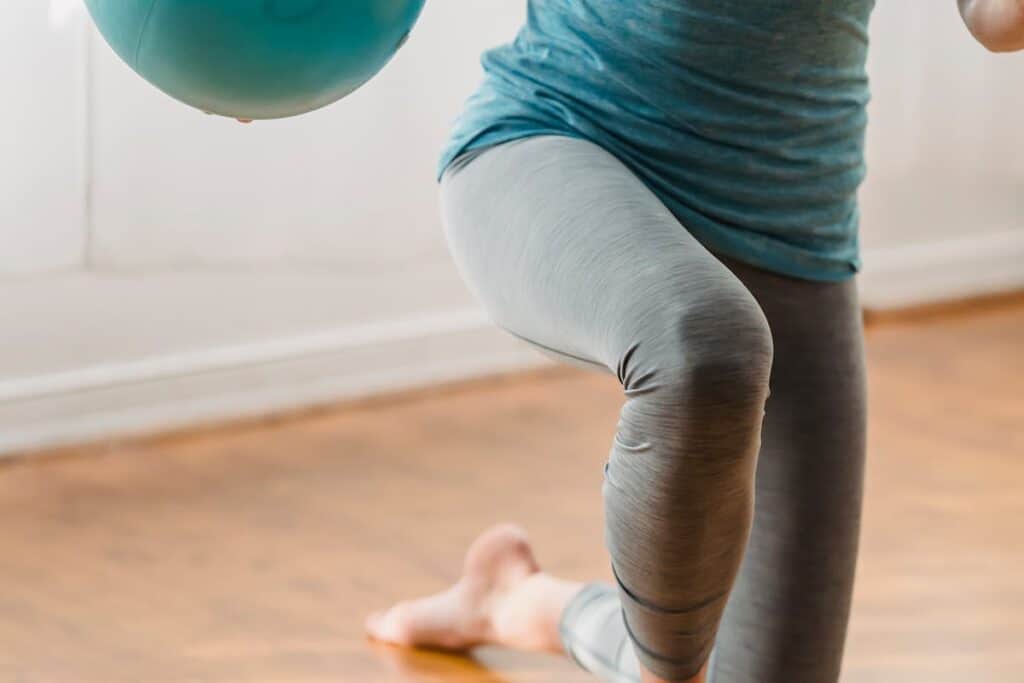
Squats are great for building strength, improving mobility, and helping with weight loss. But if you have bad knees, they might seem risky. It’s common to find squats included in many fitness routines, but they’re not the only option for strengthening your legs.
In this article
In fact, there are plenty of alternatives to squats that can still help you strengthen your legs without putting strain on your joints. In this article, we explore six leg-strengthening exercises and modifications that are excellent squat alternatives, especially if you’re dealing with bad knees or other physical conditions.
Who Should Avoid Squats?
Squats are a popular exercise for building strength and improving fitness, but they may not be suitable for everyone, particularly those with existing injuries or conditions that affect their knees, hips, or lower back. Individuals with limited mobility in their hips or knees, pre-existing lower back pain, past knee surgeries, or current muscle injuries should consider avoiding squats to prevent worsening their conditions.
Incorrect squatting techniques can further compound these risks. Common errors include improper knee alignment, which can lead to joint pain, and not engaging the correct muscles, which can increase the likelihood of muscle imbalances and injuries.
This is particularly concerning for those new to strength training who may not have developed the necessary core strength. A weak core can result in excessive forward-leaning during squats, which places additional strain on the lower back and knees.
While squats offer numerous benefits, including enhanced muscle strength and improved mobility, they must be performed correctly to avoid potential harm. For those who cannot perform squats safely due to physical limitations, alternative exercises that target similar muscle groups without strain can be a safer option.
What Can You Do Instead of a Squat?
Some individuals may eventually perform squats safely with proper form. These individuals can begin with safer leg, glute, core, and back strengthening exercises, then progress to unweighted squats with a focus on technique.
However, some people might never be suitable for squats. If you have joint or back problems and are uncertain about your ability to perform squats, it’s important to consult a doctor before attempting. Additionally, it’s best to use alternative exercises or modifications that target the same muscle groups without the risks associated with squats.
Exercise Modifications For Bad Knees
When it comes to working out with bad knees, it’s important to modify traditional leg exercises to reduce stress on your joints. Try these effective squat alternatives for bad knees that will not only allow you to strengthen your legs but overcome the challenges of knee pain as well.
But before you begin your workout, make sure to do warm-up exercises to get your muscles ready, improve blood flow, and lessen the chance of getting hurt.
1. Stability Ball Squats Against the Wall
One great modification is the stability ball wall squat. By placing a stability ball between your mid-back and the wall, you can perform squats without putting pressure on your knees. This exercise not only helps strengthen your lower body but also allows you to adjust the move according to your own capabilities.
How to do it:
- Position yourself with a stability ball against a wall, placing it at the small of your back. Ensure your feet are 6-12″ in front and hip-width apart, facing forward.
- Pull your shoulders down and back, lean into the ball, and shift weight to your heels. Rest your hands on your thighs.
- Inhale and lower your body, ensuring the ball rolls with your back. Drop your hips, push them back, and keep your knees over your 2nd toe. Lower until your thighs are parallel to the ground.
- Exhale and rise by pushing off the floor, extending your hips and knees.
Tip: Adjust your depth to comfort, ensuring you maintain posture by pushing your hips back, keeping your feet apart, and grounding your weight on your heels.
2. Reverse Lunges
Another great squat alternative for bad knees is reverse lunges. While lunges are great for leg toning and glute activation, the forward variation can strain the knees. Try performing reverse lunges instead to tone your legs without causing discomfort or pain in your knees.
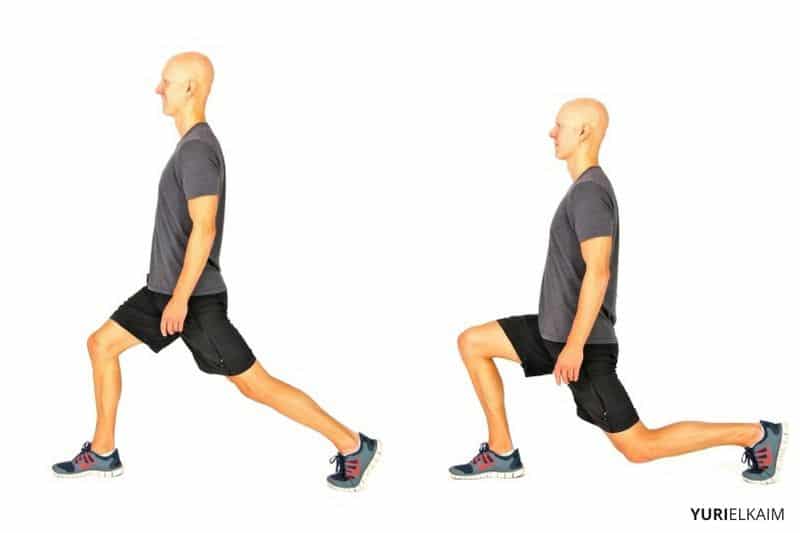
How to do it:
- Stand upright, hands on hips.
- Start by stepping back with your left foot and lowering yourself into a lunge position.
- Lower hips; right thigh parallel to the floor, left knee at 90 degrees.
- Press with the right heel to stand and complete the rep.
- Switch and step back with the right leg.
Tip: Focus on activating your glutes, ensuring minimal pressure on the trailing leg. Begin without weights, ensuring proper foot weight distribution to ease knee pressure. Incorporate weights once you’re comfortable.
3. Glute Bridges
Glute bridges are efficient for targeting the lower body without straining the knees, emphasizing the glutes, hamstrings, and core.
How to do it:
- Lie on your back, knees bent, feet hip-width apart and close to your glutes. Arms at sides, palms up.
- Engage glutes and abs, then lift hips upwards.
- Elevate hips until a straight line forms from knee to hip to shoulder.
- Hold at the top, squeezing glutes, for two seconds.
- Gradually lower hips, maintaining core tension.
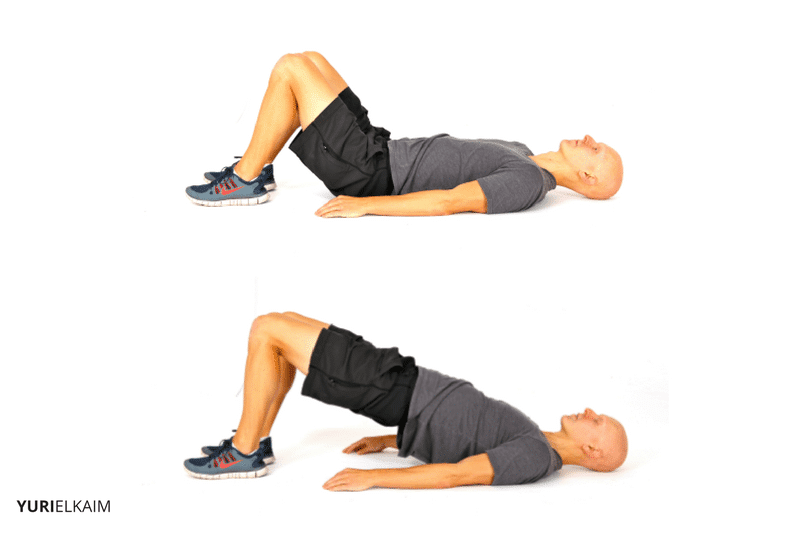
Tip: Explore the single-leg variant for an added challenge, emphasizing one hamstring at a time after mastering the basic bridge.
4. Stability Ball Hamstring Roll In
Targeting the often overlooked hamstrings, this exercise also enhances glute and core strength, utilizing a stability ball for maximum effect and knee protection.
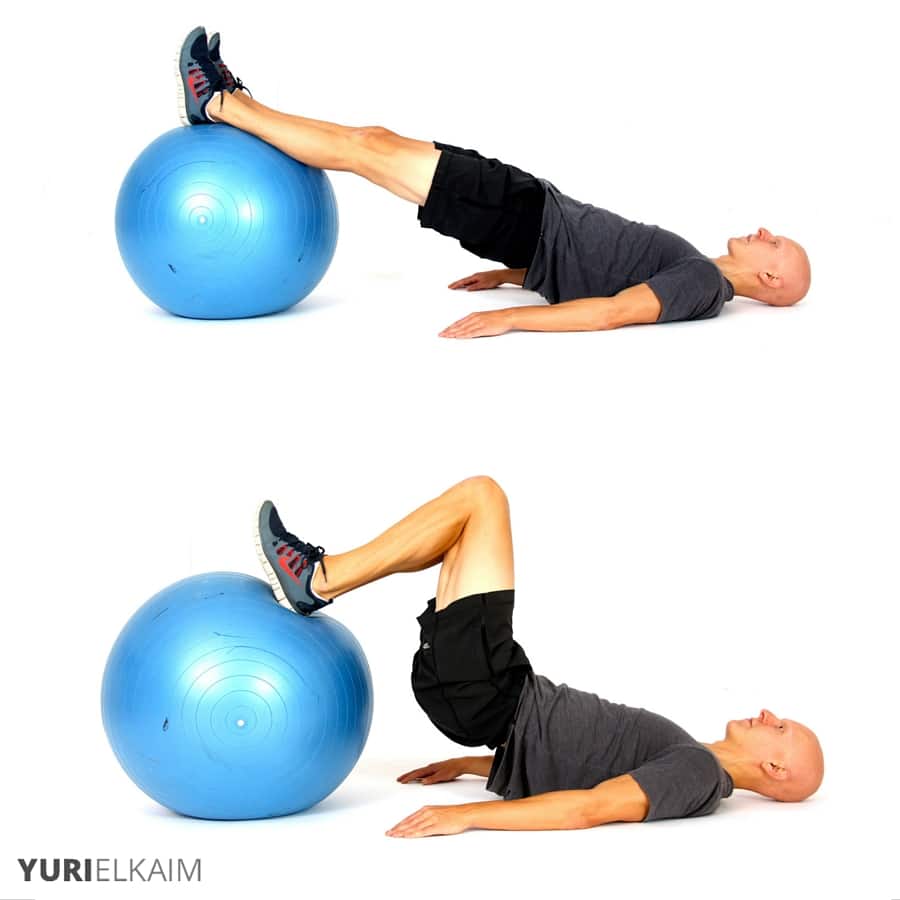
How to do it:
- Lie on your back with arms at your sides, and feet on a stability ball.
- Engage glutes and abs, lifting the body into a straight line; only head and shoulders on the mat.
- Roll the ball in by pulling the heels towards the glutes and then push out. Repeat as desired, then lower the body to the mat.
Tip: Start by simply raising and lowering your hips. As you gain strength, integrate the pull movement. Initial muscle cramps are typical but will ease with time.
5. Use Elastic Resistance Bands
Elastic bands, when positioned around the knees during squats, promote better posture and glute activation, thereby lessening knee pressure. This tactic naturally urges the knees outward, engaging hip stabilizers, and often lessens knee discomfort.

6. Box and Sumo Squats
Box and sumo squats are knee-friendly squat variants. For box squats, use a box (or similar) to sit upon at each squat’s bottom, ensuring you lean back to reduce knee strain. Conversely, sumo squats emphasize the glutes more than the quads and hamstrings. The sumo stance involves a wider foot position and maintaining an upright back posture while executing the squat movement.
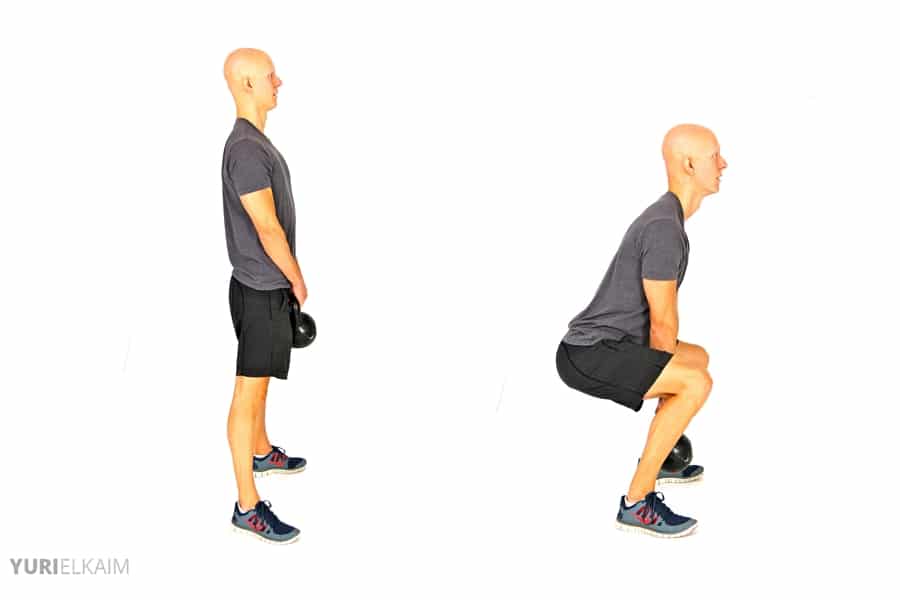
Are squats really bad for your knees?
Squats have long been hailed as one of the best exercises for building strong and toned legs. However, there is a common belief that squats can be harmful to the knees, especially for those with pre-existing knee issues.
The truth is, when performed with proper form and technique, squats can actually help strengthen the muscles around the knee joint and improve overall knee stability. When you perform a squat correctly, your knees should track in line with your toes and not extend beyond them. This helps to distribute the load evenly across your leg muscles and reduces stress on the knee joint.
So while squats may not be suitable for everyone, they are generally safe and beneficial for most individuals when performed correctly.
Additionally, engaging your glutes and core during a squat can provide added support to the knees and prevent excessive strain. It is important to note that if you have existing knee pain or injuries, it is recommended to consult with a healthcare professional before attempting squats or any other exercise.
How can you avoid knee injuries from squats?
Protect your knees and prevent injuries during squats with these effective strategies.
- Warm up properly: Before diving into your squat routine, make sure to warm up your muscles and joints. This can include dynamic stretches, such as leg swings or hip circles, to increase blood flow and flexibility in the targeted areas.
- Focus on proper form: One of the most common causes of knee injuries during squats is improper form. To protect your knees, ensure that you’re maintaining proper alignment throughout the movement. Keep your knees aligned with your toes, engage your core for stability, and avoid rounding your back or allowing your knees to collapse inward.
- Start with bodyweight squats: If you’re new to squats or have knee issues, it’s best to start with bodyweight squats before adding weight. This allows you to master the correct form and build strength gradually without putting excessive stress on your knees.
- Modify the depth: Squatting too low can put extra strain on the knees, especially if you have pre-existing knee issues. Consider modifying the depth of your squat by only going as low as is comfortable for you without causing pain or discomfort in your knees.
Frequently Asked Questions
Check out these commonly asked questions about squat alternatives for bad knees:
Can squats really be bad for your knees?
Yes, squats can be bad for your knees if they are not performed with proper form or if you have pre-existing knee issues. It’s important to listen to your body and modify exercises as needed to avoid putting unnecessary stress on your knees.
What are some examples of low-impact strength workouts?
Some examples of low-impact strength workouts include using resistance bands and machines that reduce strain on the joints. Incorporating exercise bands or utilizing machines at the gym can help protect your knees while still allowing for effective strength training.
What are some squat alternatives for bad knees?
To modify leg exercises for bad knees, try stability ball wall squats, reverse lunges, deadlifts, and glute bridges. These exercises help strengthen your legs without putting excessive pressure on your knees.
Can knee injuries from squats be avoided?
Yes, knee injuries from squats can be avoided. To prevent knee pain, make sure to use proper form, warm up before exercising, and start with lighter weights. Additionally, incorporating alternative exercises like glute bridges and reverse lunges can help protect your knees.
How can low-impact workouts help with knee injuries?
Low-impact workouts can help with knee injuries by reducing stress on the joints. They allow you to exercise while minimizing discomfort and promoting overall fitness. Incorporating exercises like cycling, walking, or swimming can strengthen your legs without causing further harm to your knees.
Final Word
If you have bad knees, it doesn’t mean you have to give up on leg day. There are plenty of alternatives to squats that can still help strengthen your legs without causing pain or further injury.
By incorporating low-impact exercises such as cycling, walking, and swimming into your routine, you can keep the pressure off your knees while still getting a good workout.
Additionally, using resistance bands for strength training can provide a full-body workout that is gentle on your joints.
So are you ready to try these squat alternatives for bad knees? By taking care of your knees and choosing exercises that are effective yet gentle on the joints, you can continue to work your legs and maintain overall fitness while protecting yourself from knee pain.
Takeaways
- Strengthening the muscles around your knee joint is important to protect you from knee pain.
- Some effective squat alternatives for those with bad knees include stability ball wall squats, reverse lunges, glute bridges, stability ball hamstring roll-ins, using elastic resistance bands for squats, and performing box and sumo squats.
- Incorporating upper body movements, exaggerating your movements, and increasing speed can make low-impact workouts more intense and help you burn calories.
